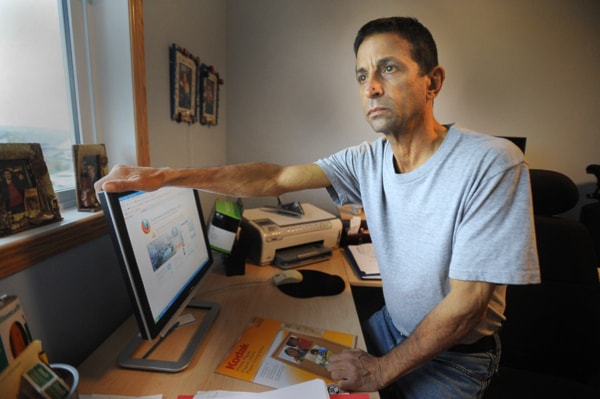A Red Deer man says he needs someone to donate a portion of their liver to him or he will not live to see 2012.
Barry Kander, 57, has Crohn’s disease, which progressed into chronic liver disease primary sclerosing cholangitis a few years ago.
He received a cadaver liver transplant in July 2000.
Now the disease has returned and Kander, a retired special education teacher, needs a new liver from a living donor.
“Because (primary sclerosing cholangitis) came back so aggressively, my surgeon said we won’t have time to wait for a cadaver,” Kander said.
“I don’t see myself being able to look after myself after the end of November. It’s getting worse. Everyday I’m noticing I’m losing energy.”
He said a friend is being tested to determine if she can donate part of her liver.
Meanwhile, Kander continues to search for other donors in case she does not qualify and has a blog and website — www.asliceforlife.ca — to spread word of his search.
In Alberta, donors must be between the ages of 18 and 55, a compatible blood type with the recipient, and in good mental, emotional and physical health.
With living liver transplants, the donated liver and the donor’s remaining liver regenerate to normal size.
In Alberta, donors have to be a relative, spouse or someone who has known the recipient for one year.
Kander wants the rules to change.
“The way I see it is if somebody wants to be a Good Samaritan and help another person, and it’s not for money, it should be allowed.”
Alberta does not keep a list of people willing to be Good Samaritan living liver donors, he said.
Kim Worton, unit manager with Alberta Health Services Human Organ Procurement and Exchange Program, said a living liver donation is about 10 times as risky as a living kidney donation, so Alberta requires the donor and recipient be in an established relationship for a minimum of one year prior to being screened for donation.
“Alberta Health Services doesn’t accept Good Samaritan living donors. That’s due to the significantly higher risks with living liver donation,” Worton said.
In the first nine months of 2011, Alberta had nine living liver transplants. Twelve surgeries were performed in 2010 and nine in 2009.
Worton knew of only one other Albertan who solicited help from agencies and the public to find a living donor.
“I don’t think it was successful.”
Alberta covers the medical costs of the living donor assessment and surgery even if the donor lives outside Alberta.
Non-medical costs, like travel and loss of income during assessment, surgery and recovery, are not covered by the province.
A donor with a medical plan through work may qualify for benefits. Employment insurance benefits may also be available.
Kander said he will pay any extra costs his donor incurs. His possible donor has a medical plan at work.
szielinski@www.reddeeradvocate.com
— copyright Red Deer Advocate
